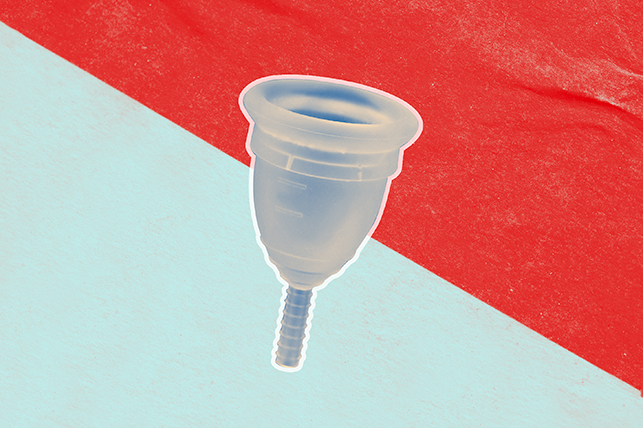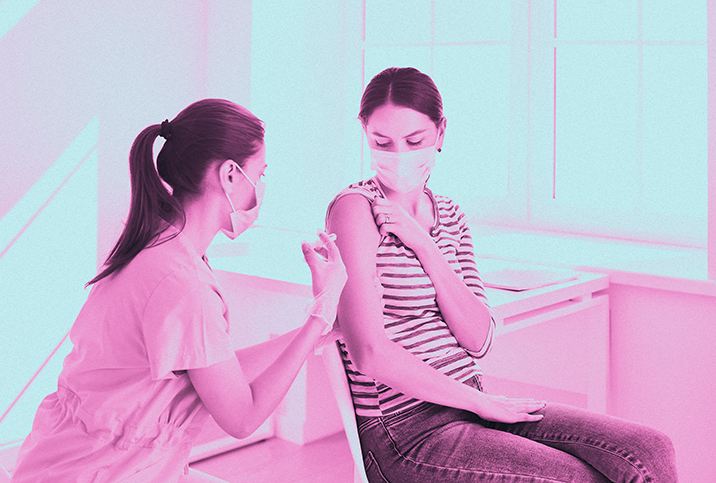Familiarize Yourself With the Purpose and Symptoms of Menstruation

Around the globe, about 1.8 billion people menstruate each month. Often marked by a variety of symptoms such as bloating, cramping and fatigue, menstruation is the body's way of preparing for pregnancy.
Most people begin to menstruate during puberty, at an average age of 12. Menstruation— referred to as a period, cycle or menses—is a recurring biological process that is essential for reproduction. However, a period is just one of four stages in the menstrual cycle.
"Menstruation, or having your period, is the normal shedding of the lining of your uterus every month," said Arielle Bayer, M.D., a reproductive endocrinologist with CCRM Fertility in New York City.
Ovulation, which typically occurs once a month, happens when the ovaries release a mature egg that then travels through the fallopian tubes. If the egg is not fertilized by a sperm cell, it exits the body, along with uterine tissue, during menstruation. When a fertilized egg implants in the uterus, pregnancy occurs and menstruation stops.
Menstruation basics
Menstruation happens approximately two weeks after the ovary has released an egg, Bayer explained.
"If the egg is not fertilized that month and you do not get pregnant, the uterus will shed its lining, which results in vaginal bleeding, or a period, a mixture of blood and tissue," Bayer said.
The tissue that lines the uterus and is shed during menstruation is called the endometrium. Blood and tissue are discharged from the uterus and through the vagina.
Hormones play a significant role during menstruation. The ovaries primarily produce the hormones estrogen and progesterone, which help the lining of the uterus prepare for pregnancy each month.
Before menstruation, estrogen and progesterone levels drop. Changes in hormones can also lead to an increase in menstrual symptoms.
Menstruation can last anywhere from two to seven days but typically lasts about five days, with the heaviest bleeding usually occurring at the beginning of the cycle. Generally, people lose about two to three tablespoons of blood each menstrual cycle. Certain forms of birth control, such as the pill, patch, vaginal ring, shot and intrauterine device (IUD), can interfere with the menstrual cycle's frequency or the severity of symptoms.
Other factors, such as stress and lifestyle, can also impact menstrual regularity.
The purpose of menstruation
"The purpose of menstruation is to shed the old layer of cells from the uterine walls in order to start a fresh cycle and begin to build up the layer for the following month," Bayer said. "It prepares the uterus for a potential pregnancy."
There's also a regulatory purpose for menstruation.
"This shedding process prevents the lining from overgrowing or becoming too thick, which could lead to hyperplasia or precancer," Bayer explained.
The hormones released during the menstrual cycle also have benefits, such as estrogen lowering the risk of heart disease. A regular menstrual cycle indicates the body has an advantageous hormone balance and can offer insight into general health. Abnormal bleeding, heavy bleeding and other menstrual irregularities, such as bleeding between periods, can sometimes indicate an underlying condition.
Phases of the menstrual cycle
A menstrual cycle has varying phases, including a menstrual period. The first day of a menstrual cycle begins on the first day of menstruation—your period—the indication you are not pregnant. After menstruation comes the follicular, or proliferative, phase.
"This is the first half of your menstrual cycle where your ovary is growing its dominant follicle and your uterine lining is beginning to thicken, or proliferate, and build up the layer to receive a potentially fertilized egg," Bayer said.
The follicular phase typically lasts 14 days and ends when you start to ovulate.
The average length of a menstrual cycle is 28 days. Ovulation typically occurs on day 14. An increase in the luteinizing hormone (LH), which helps control the menstrual cycle, causes the ovary to release a mature egg. An individual is most fertile and has the best opportunity to conceive during ovulation, which typically lasts about 24 hours.
The luteal, or secretory, phase is the second half of the menstrual cycle that occurs after ovulation, according to Bayer.
"It's where your ovary now contains an emptied-out follicle, the corpus luteum—hence, the name luteal phase—and the lining of the uterus is getting ready to shed or secrete or slough off," Bayer explained.
The luteal phase is about 14 days long, during which progesterone increases to help thicken the uterine lining. If pregnancy does not occur, hormone levels drop and the uterus lining sheds. Cervical mucus also thickens during the luteal phase, and breast tenderness and changes in appetite are common.
After the luteal phase, the menstrual cycle repeats.
The duration of a menstrual cycle can vary from month to month and is counted from the first day of a period to the first day of the next period. Menstrual cycles can change with age. Menopause signifies the end of a menstrual period and typically occurs during someone's 40s or 50s, with an average age of 51.
Symptoms of menstruation
Leading up to menstruation, premenstrual syndrome (PMS) can cause a variety of emotional and physical symptoms:
- Depression
- Mood swings
- Insomnia
- Low libido
- Anxiety
Headaches, acne, fatigue, bloating and diarrhea are also common.
Symptoms during menstruation are similar to those of PMS, with the addition of cramps.
Menstrual symptoms can range in severity. Typically, symptoms disappear four days after the start of a menstrual cycle, and while menstrual symptoms are very common, some women experience few or no symptoms, Bayer said.
It's typical to experience at least one symptom, but a severe onset of symptoms may indicate an underlying problem. If menstrual symptoms worsen, obstruct day-to-day life or are unmanageable with over-the-counter medicine, it might be time to schedule an appointment with a provider.
Heavier-than-normal bleeding, bleeding between periods and a period that suddenly stops might also indicate that it's time for a checkup.
If you don't have a regular OB-GYN or are looking for a new one, telehealth makes the initial appointment easy. Video visits have become a viable option for most people, and more physicians have added them as a service. Giddy telehealth makes it easy to get connected to a qualified healthcare professional—some offer same-day appointments—who can help with a variety of conditions.


















